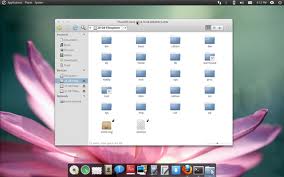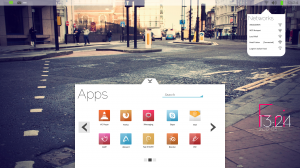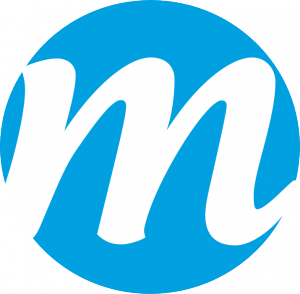Something new in the land of Linux distros
If you have been following the news and stories on Linux distributions since over ten years like I have been, you tend to have a fairly standard view -yet an educated one- about what’s going on with them, why every year since about 2002 this could have been the year of the Linux desktop, how Mandriva almost made it but was beaten off by Ubuntu, and why Android and likely Ubuntu are triomphing not on the desktop itself but on the phones and tablets.
Going even into more details, the land of Linux distributions is a fertile place where a few seeds give an abundant harvest of derivatives, many of them focused on a particular audience or usage, others ending up becoming something completely different. Usually, this land has its big cities, the Red Hats, Suses, Debian and Ubuntu ones. Around them you’ll have the derivatives. Other distributions exist and also count for an exciting and important part of the landscape: ArchLinux, SlackWare, Mageia, LFS, and I’m forgetting several of them here. So what’s new?
Some exciting new distributions are coming of age, but the best part is that in some sense these new projects validate the way the distribution model and the “economy” of Linux distributions has always been about. Let me introduce you to three new distributions I am excited about: Elementary OS, Nitrux and the Maui Project [full disclosure: I use Arch on my two machines, I’ve tried and installed Elementary OS several times; the other initiatives I’m talking about here are projects with no stable versions yet].
Elementary OS
Elementary has been around for some time; at least since 2011. Elementary is not yet another re-spin of  Ubuntu “designed to be user-friendly”, to quote the polite description you find on several distros on DistroWatch. Elementary is indeed based on Ubuntu LTS but the top tier is very different. A new graphical stack, carefully selected software (such as Geary and Midori), new ones fully developed by the Elementary team such as the Scratch editor, a new music application give the most polished and beautiful impression a Linux distribution I have ever seen. And I’ve seen a lot, including my own desktop that I tend to tweak a lot. In the end, Elementary comes with a full installation. The system is light-weight and manages the difficult task to create an “Apple-like” experience by not being a clone of Apple. I have installed Elementary OS myself for close friends, and I can say the system is very stable and highly polished. Additional software can be added; in fact you can use the Ubuntu repositories and PPAs with Elementary which should give you no trouble in terms of software choice.
Ubuntu “designed to be user-friendly”, to quote the polite description you find on several distros on DistroWatch. Elementary is indeed based on Ubuntu LTS but the top tier is very different. A new graphical stack, carefully selected software (such as Geary and Midori), new ones fully developed by the Elementary team such as the Scratch editor, a new music application give the most polished and beautiful impression a Linux distribution I have ever seen. And I’ve seen a lot, including my own desktop that I tend to tweak a lot. In the end, Elementary comes with a full installation. The system is light-weight and manages the difficult task to create an “Apple-like” experience by not being a clone of Apple. I have installed Elementary OS myself for close friends, and I can say the system is very stable and highly polished. Additional software can be added; in fact you can use the Ubuntu repositories and PPAs with Elementary which should give you no trouble in terms of software choice.
Nitrux
Nitrux seems to have started sometime in 2013. Nitrux is really three things at the same time: a Linux  distribution, a hardware appliance on which this distribution runs and a company. Now that is an ambitious goal to start with, and I wish the Mexico-based company a great success. Nitrux essentially focuses on the user experience to deliver an all in one “package”: an appliance with a beautiful software interface and applications that would ideally fit in a living room. Interestingly, the graphical stack is based on Qt5 which should make things interesting and maybe somewhat KDEish. At the moment not much aside the appliance itself and part of their business model is visible: Nitrux will give back some of its revenues to the Qt5 developers.
distribution, a hardware appliance on which this distribution runs and a company. Now that is an ambitious goal to start with, and I wish the Mexico-based company a great success. Nitrux essentially focuses on the user experience to deliver an all in one “package”: an appliance with a beautiful software interface and applications that would ideally fit in a living room. Interestingly, the graphical stack is based on Qt5 which should make things interesting and maybe somewhat KDEish. At the moment not much aside the appliance itself and part of their business model is visible: Nitrux will give back some of its revenues to the Qt5 developers.
The Maui Project
Technically speaking, the Maui Project seems to be somewhat related to Nitrux, in that its graphical stack is based on Qt5. Maui claims they’re using Wayland which is also an interesting point. It is unclear to me what Linux distribution base, if any, they’re using. I see their roster has several Fedora packagers, but I also see that they have some sort of an “overlay” (to speak in Gentoo terms) for Arch Linux, allowing you to essentially turn your Arch distribution into a Maui distro without installing the actual Maui project disk image. The Maui project also produces icons that are available for pretty much everyone in the Linux community – I should add that so are the Nitrux icons. I’m looking forward to try this Maui overlay on Arch as soon as I’ll have more time .
stack is based on Qt5. Maui claims they’re using Wayland which is also an interesting point. It is unclear to me what Linux distribution base, if any, they’re using. I see their roster has several Fedora packagers, but I also see that they have some sort of an “overlay” (to speak in Gentoo terms) for Arch Linux, allowing you to essentially turn your Arch distribution into a Maui distro without installing the actual Maui project disk image. The Maui project also produces icons that are available for pretty much everyone in the Linux community – I should add that so are the Nitrux icons. I’m looking forward to try this Maui overlay on Arch as soon as I’ll have more time .
I am very excited by these three projects because they actually deliver a great user experience to the user, because they’re fun and innovative and because they fare much better than any recent Windows 7 or 8 experience in my opinion. Quite interestingly, their net contributions to the Linux stack works the same way than distributions such as Ubuntu started: the highest-level stack including all the desktop polish and applications receive all their energy and attention, while the lower level stacks such as the distribution base itself comes from elsewhere. After something like 20 years, I am amazed this upstream – downstream model still works, and works well.
Happy New Year to all of you!

Leave a Reply